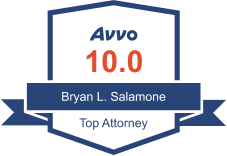Updating Your Estate Plan After Your Divorce
If you’ve been through a contested divorce, you’ve already fought to hold onto your separate property and a fair portion of your marital estate. So why let your estate plan give it all back to your ex? That’s what could happen if you don’t review your testamentary documents and financial products that list your beneficiaries.
After divorce, you need to revise your will for a couple of reasons. First, you might not have retained ownership of all the property that’s listed. You can’t give away what you don’t own. But more importantly, your ex-spouse is probably first and foremost among your beneficiaries. If something should happen to you before you revise your will, your worldly wealth may be headed toward the person you least want to get it.
Now, take a look at your financial instruments. The insurance policies, annuities, brokerage accounts and bank accounts you held onto almost certainly have a beneficiary listed. Upon your passing, those instruments transfer automatically to the named beneficiary, who is most likely your ex-spouse.
And what about your retirement plan? If you were the primary earner in your marriage, the court probably severed your qualified plan – 401(k) or IRA – with a qualified domestic relations order (QDRO). But if you were part of a two-career household, your retirement accounts could still be intact. If so, they no doubt name your ex as the beneficiary.
Finally, did you create a trust to hold any of your separate property? Take a look at the named beneficiary there. If it’s a revocable trust, you can amend it, naming someone else. If it is an irrevocable trust, you will need the beneficiary’s permission to make that change. If you didn’t bring that up with your ex during your divorce, good luck handling it now.
At Bryan L. Salamone & Associates, P.C., we believe the best time to tie up these loose ends is during your divorce. As part of our commitment to protect your property rights, we provide reliable guidance on how to manage complex financial instruments and testamentary documents.






